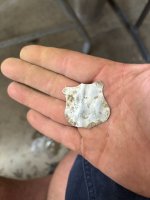Whittman
Jr. Member
I am looking to make an air dredge for use on a smaller boat to work wrecks in the 20 to 30' range. I would appreciate any information, tips, or links that my fellow members could provide. Especially concerning design configuration and type of air compressor. Thanks in advance!






